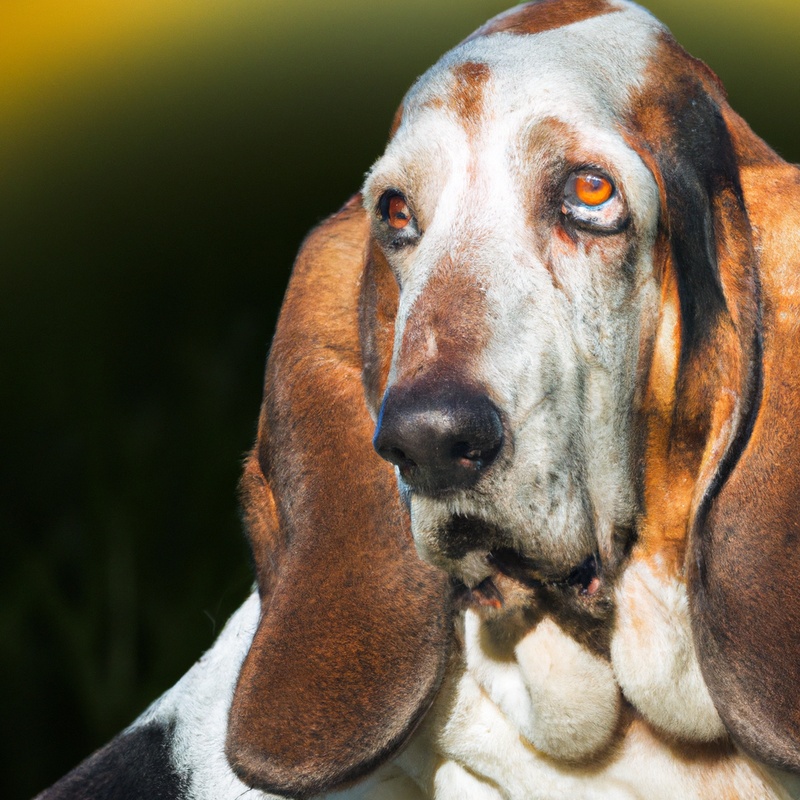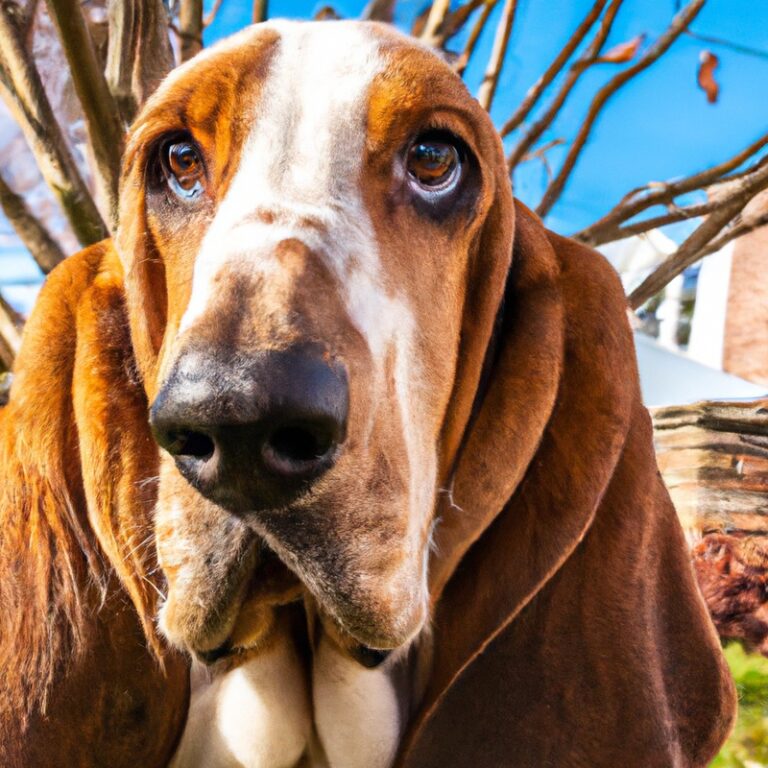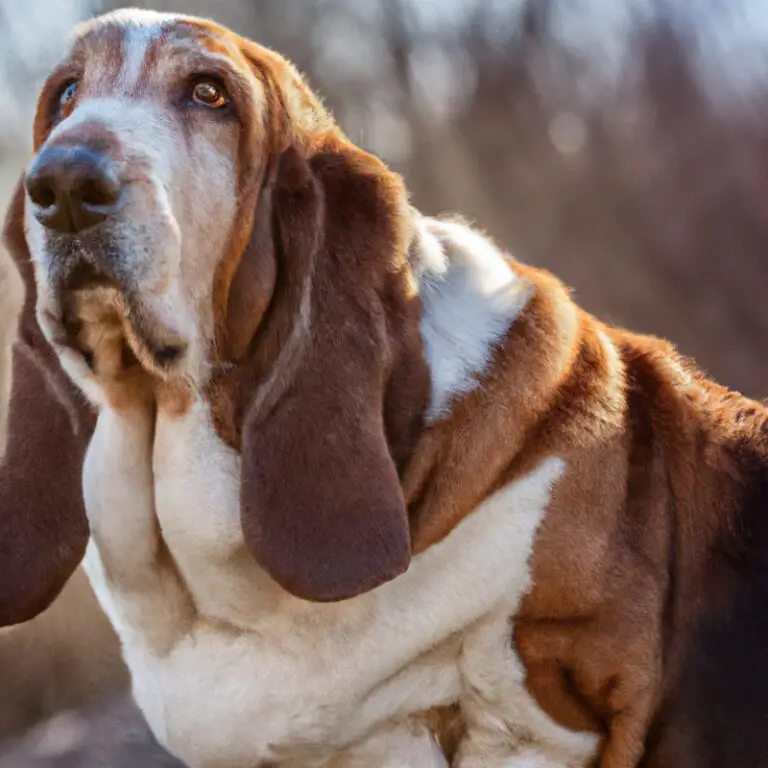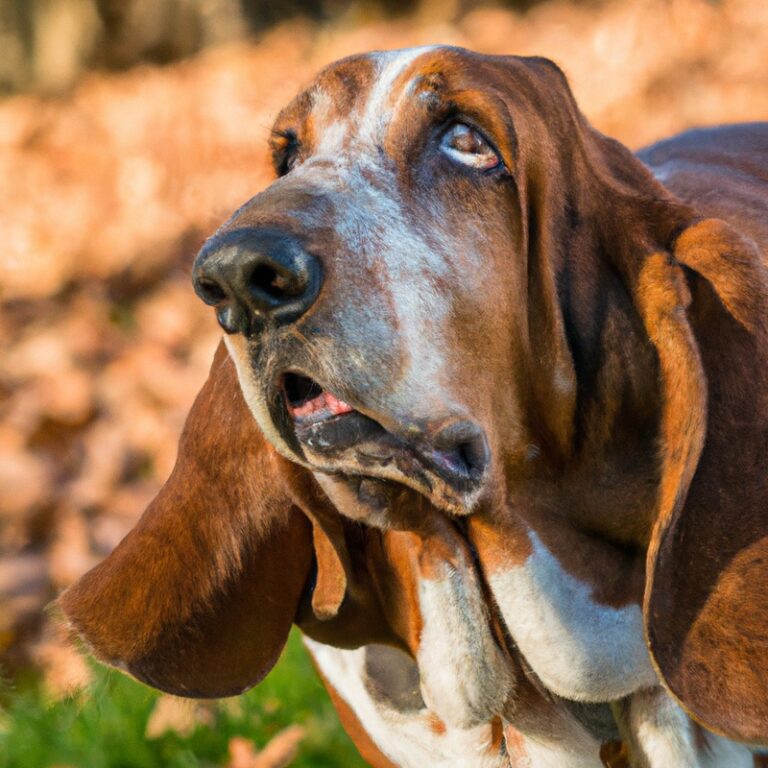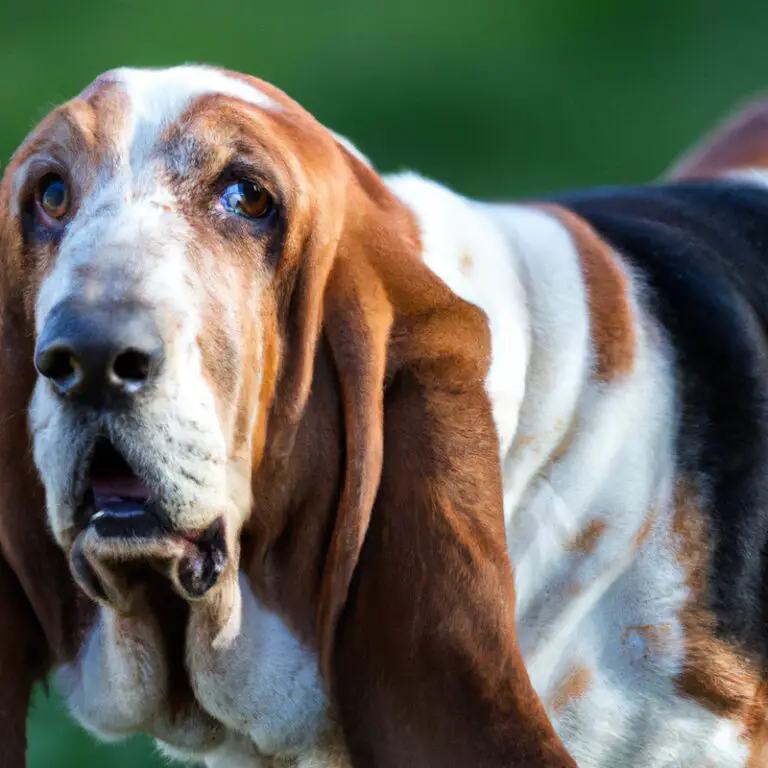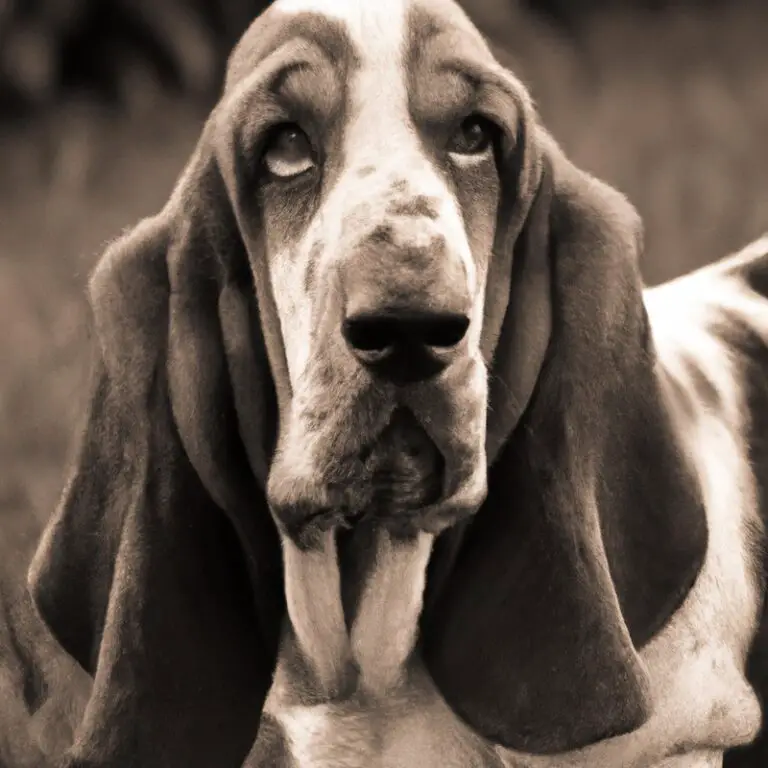Why Do Basset Hounds Have Long Ears?
Key Takeaways:
- Basset Hounds have long ears to enhance their sense of smell.
- The long ears of Basset Hounds help to collect and direct scent particles toward their nose.
- The shape of Basset Hound’s ears helps to minimize interference from ground and foliage when tracking scents.
- Basset Hounds’ long ears also serve as a distinctive physical trait that makes them easily recognizable.
Have you ever wondered why Basset Hounds have those irresistibly droopy and long ears? Well, you’re not alone! As a dog lover and an expert in canine breeds, I’ve always been fascinated by the unique physical characteristics that set each breed apart.
And when it comes to the Basset Hound, those long ears are definitely a standout feature.
In this article, we’ll delve into the fascinating world of Basset Hound ears, exploring their purpose, and care, and dispelling any myths surrounding them. So, grab a cup of tea, sit back, and let’s uncover the secrets behind those adorable floppy ears!
| Reasons | Explanation |
|---|---|
| 1. Enhanced sense of smell | The long ears of Basset Hounds help to funnel scent particles and direct them toward the dog’s nose, improving their sense of smell. |
| 2. Protection | Their long ears provide some protection to their face and neck by covering sensitive areas and shielding them from dirt, debris, and insects. |
| 3. Heat regulation | The large surface area of their long ears can aid in cooling down the body by dissipating heat, especially in hot weather. |
| 4. Communication | Basset Hounds often use their ears to communicate their emotions to humans and other dogs. For example, when they are sad or worried, their ears may droop. |
| 5. Attractiveness | Long ears are considered a distinctive feature of Basset Hounds, adding to their overall cuteness and charm. |
The Basset Hound Breed
Overview of the Basset Hound breed
Basset Hounds are a unique breed known for their long bodies, droopy eyes, and of course, those adorable long ears. They are low to the ground, with short legs and a calm temperament.
Bassets are scent hounds, originally bred for hunting small game.
They have a keen sense of smell and can track scents for miles. While they may appear lazy, Bassets actually need regular exercise to stay healthy and happy.
They are friendly, patient, and get along well with children and other pets.
Bassets make great family pets for those looking for a loyal, gentle companion.
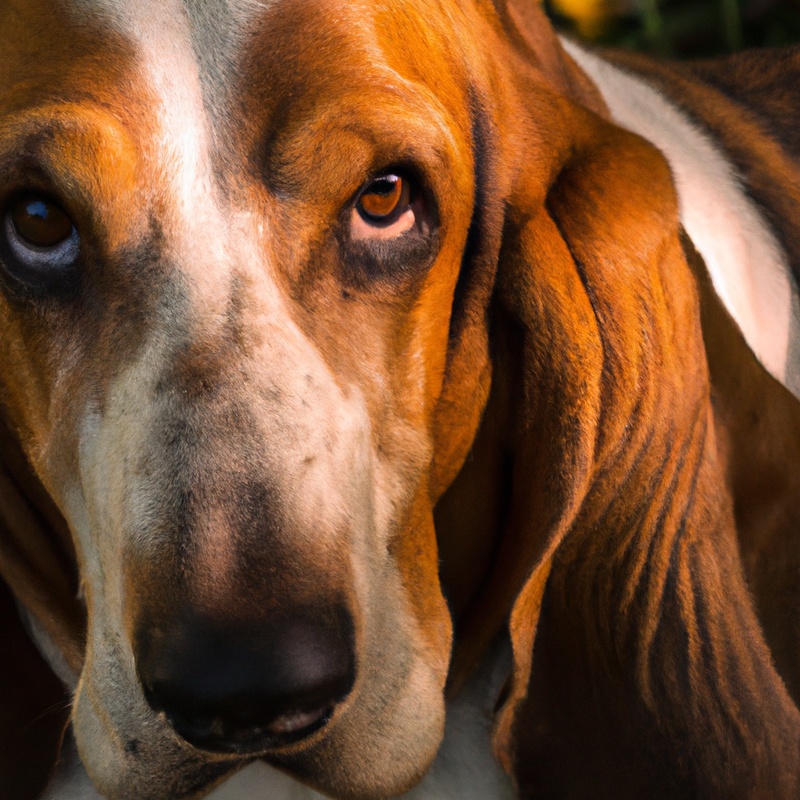
Physical characteristics of Basset Hounds
Basset Hounds have several distinct physical characteristics that set them apart.
First, their most recognizable feature is their long, droopy ears that hang low on the sides of their heads.
These ears help to funnel scents towards their nose, enhancing their sense of smell.
Additionally, Basset Hounds have a long body with short legs, making them low to the ground.
They also have loose, wrinkled skin and a droopy face with sad-looking eyes.
Overall, these physical traits contribute to their unique and adorable appearance.

Historical background of Basset Hounds
Basset Hounds have a fascinating historical background. They were originally bred in France in the 16th century for hunting purposes.
Their distinctive appearance and exceptional sense of smell made them excellent for tracking small game.
Basset Hounds were particularly popular among French nobility, who valued them for their hunting abilities. Over the years, Basset Hounds gained recognition worldwide for their lovable nature and unique physical characteristics, including their long ears.
Today, they are cherished as beloved family pets and continue to be admired for their rich history and charming traits.

Popularity and traits of Basset Hounds
Basset Hounds are a popular breed known for their unique physical characteristics and lovable traits.
They have a friendly and gentle temperament, making them great family pets.
Basset Hounds are also known for their excellent sense of smell, which makes them well-suited for activities like tracking and hunting.
Their long ears and droopy eyes add to their adorable appearance, making them easily recognizable.
Basset Hounds are low-energy dogs and require moderate exercise to stay healthy.
Overall, their charming personality and distinct features make them a beloved breed among dog enthusiasts.
Understanding Basset Hound Ears
Unique characteristics of Basset Hound ears
Basset Hound ears are known for their unique characteristics that set them apart from other dog breeds. Here are some key features of Basset Hound ears:
- Length: Basset Hound ears are famously long and droopy, reaching below their jawline. This characteristic gives them a distinctive and adorable appearance.
- Softness: The ears are velvety and soft to the touch, adding to the charm of these lovable dogs. They are often a favorite spot for petting and scratching.
- Functionality: The long ears serve a purpose beyond aesthetics. They help to sweep scents upward toward the dog’s nose, enhancing their ability to track smells and detect prey.
- Pendulous nature: Basset Hound ears hang low and are pendulous, which means they sway as the dog moves. This motion can be quite amusing to watch and adds to their endearing nature.
- Folded shape: Basset Hound ears typically have a folded appearance near the base, which contributes to their distinct look and adds to their cuteness factor.
These unique characteristics make Basset Hound ears one of the most recognizable features of this beloved breed.
Importance of ears for a Basset Hound
Basset Hound ears are essential for their hunting abilities and overall health.
Here’s why ears are important for Basset Hounds:
- Enhanced Sense of Smell: Their long, droopy ears help to sweep scents closer to their noses, intensifying their ability to track scents.
- Protection: The large ears shield the ear canals from dirt, debris, and insects when the Basset Hound is navigating through grass and bushes.
- Cooling Mechanism: The thin skin and large surface area of their ears aid in regulating body temperature, especially during hot weather.
- Communication: Basset Hounds use their ears to communicate their moods and intentions to humans and other dogs.
- Ear Health: Regular ear care is vital to prevent infections and maintain the overall well-being of a Basset Hound.
By understanding and valuing the importance of Basset Hound ears, we can provide them with the care and attention they need to thrive.
Comparison of Basset Hound ears with other breeds
Basset Hound ears are distinctive and unique compared to other breeds. They are long, floppy, and hang down beside their face.
This is in contrast to breeds like Labradors or German Shepherds, whose ears stand erect.
Basset Hound ears serve a practical purpose, helping to funnel scents towards their nose while hunting. Other breeds with similar ear characteristics include Bloodhounds and Coonhounds.
While each breed may have slight variations in ear shape and size, the long, droopy ear design is a common trait among these scent hound breeds.
Common ear problems in Basset Hounds
Basset Hounds are prone to certain ear problems due to their unique ear shape and size.
Some common ear problems in Basset Hounds include:
- Ear Infections: Basset Hound ears are long and floppy, which can create a warm and moist environment ideal for bacterial or yeast infections.
- Ear Mites: These tiny parasites can infest the ear canal of Basset Hounds, causing itching, irritation, and discomfort.
- Allergies: Basset Hounds may develop allergies that can affect their ears, leading to inflammation, itching, and ear infections.
- Wax Buildup: Due to their droopy ears, Basset Hounds may experience excessive wax buildup, which can contribute to ear infections and discomfort.
Regular ear cleaning, proper grooming, and regular veterinary check-ups can help prevent and manage these common ear problems in Basset Hounds.
If you notice any signs of ear trouble, it’s essential to consult a veterinarian for proper diagnosis and treatment.
The Purpose of Long Ears in Basset Hounds
Hunting instincts and scent detection
Basset Hounds have a strong hunting instinct and well-developed scent detection abilities. They were bred to track down scent trails and locate game in dense underbrush.
Their long ears play a crucial role in this process by collecting and funneling scents towards their noses.
The large surface area of their ears helps them to detect and analyze different scents in the environment. Additionally, their droopy ears help to stir up scent particles as they move their heads, further aiding their scent detection abilities.
These instincts make Basset Hounds excellent hunting companions and reliable scent trackers.
How long ears enhance a Basset Hound’s sense of smell
Basset Hounds have long ears that work like scent collectors.
These ears are thin and droopy, and their purpose is to sweep the ground when the dog is sniffing for scents.
The long ears help trap odors and direct them towards the nose, enhancing the dog’s ability to detect smells.
This unique feature allows Basset Hounds to have an exceptional sense of smell, making them excellent tracking and hunting dogs.
The long ears essentially act as amplifiers for their keen olfactory abilities.
Practicality and functionality of long ears for hunting
Basset Hounds have long ears that serve a practical purpose in their hunting abilities.
These floppy appendages enhance their sense of smell by acting as scent collectors, helping them to locate their prey.
The long ears work by trapping and funneling scents towards the dog’s nose, amplifying their olfactory capabilities.
Additionally, the ears act as a form of camouflage, blending in with the Basset Hound’s low-slung body and making it harder for prey to detect them.
Overall, the long ears of Basset Hounds play a vital role in their hunting prowess and contribute to their success in tracking and pursuing game.
Evolutionary advantages of long ears in Basset Hounds
Basset Hounds have evolved to have long ears for specific advantages.
Firstly, their droopy ears help to trap and direct scents towards their nose, enhancing their sense of smell.
This is crucial for their role in tracking and hunting.
Secondly, the long ears also act as protection, preventing dirt and debris from getting into their ear canals.
Lastly, the size and shape of their ears create a unique and adorable appearance, which has contributed to the popularity of the breed.
So, the long ears of Basset Hounds serve both practical and aesthetic purposes.
Caring for Basset Hound Ears
Tips for cleaning Basset Hound ears
To keep your Basset Hound’s ears clean and healthy, here are a few tips:
- Regular inspection: Check your Basset Hound’s ears weekly for any signs of dirt, redness, or odor.
- Gentle cleaning: Use a veterinarian-recommended ear cleaning solution and a soft cloth or cotton ball to gently wipe the outer part of the ear. Avoid inserting anything into the ear canal.
- Drying: After cleaning, make sure the ears are completely dry to prevent moisture-related issues.
- Trim hair: If your Basset Hound’s ears have excessive hair, consider trimming it to allow better air circulation.
- Consult a veterinarian: If you notice any persistent ear problems or have concerns about cleaning, it’s best to consult with your veterinarian for professional advice.
Remember, maintaining proper ear hygiene is essential to prevent infections and discomfort for your Basset Hound.
Ear maintenance and grooming
Taking care of your Basset Hound’s ears is essential to their overall well-being. Regular maintenance and grooming ensures that their long ears stay clean and healthy.
Here are some tips:
- Clean the ears weekly using a gentle, veterinarian-approved ear cleaning solution.
- Gently wipe the outer part of the ear with a clean cloth to remove dirt and wax.
- Avoid inserting anything deep into the ear canal, as it can damage the sensitive ear structures.
- Regularly check for signs of infection, such as redness, swelling, or a foul odor.
- Trim excess hair around the ear opening to prevent matting and provide better air circulation.
- Consult a veterinarian if you notice any abnormalities or if your Basset Hound seems uncomfortable. They can provide professional guidance and care.
Preventing infections and ear problems
To prevent infections and ear problems in your Basset Hound, regular cleaning and maintenance are key. Here are a few tips to keep their ears healthy:
Consulting a veterinarian for proper ear care
If you notice any issues with your Basset Hound’s ears or want to ensure proper care, it’s best to consult a veterinarian. They have the expertise to assess your dog’s ear health and provide guidance on cleaning and maintenance.
Regular check-ups can help prevent infections and address any concerns promptly.
Your veterinarian may recommend specific ear cleaning products or techniques based on your Basset Hound’s individual needs. Remember, a veterinarian’s advice is invaluable when it comes to ensuring the overall well-being of your furry friend.
Final Verdict
The long ears of Basset Hounds serve a vital purpose in their hunting abilities and overall sensory perception. These unique features give them an advantage in scent detection, allowing them to track prey with precision.
Caring for Basset Hound ears involves regular cleaning and maintenance to prevent infections.
It is essential to consult a veterinarian for proper ear care. Contrary to common myths and misconceptions, Basset Hound ears are not a hindrance but a fascinating and functional trait.
So, embrace the adorable droopiness of Basset Hound ears and appreciate their remarkable abilities.

